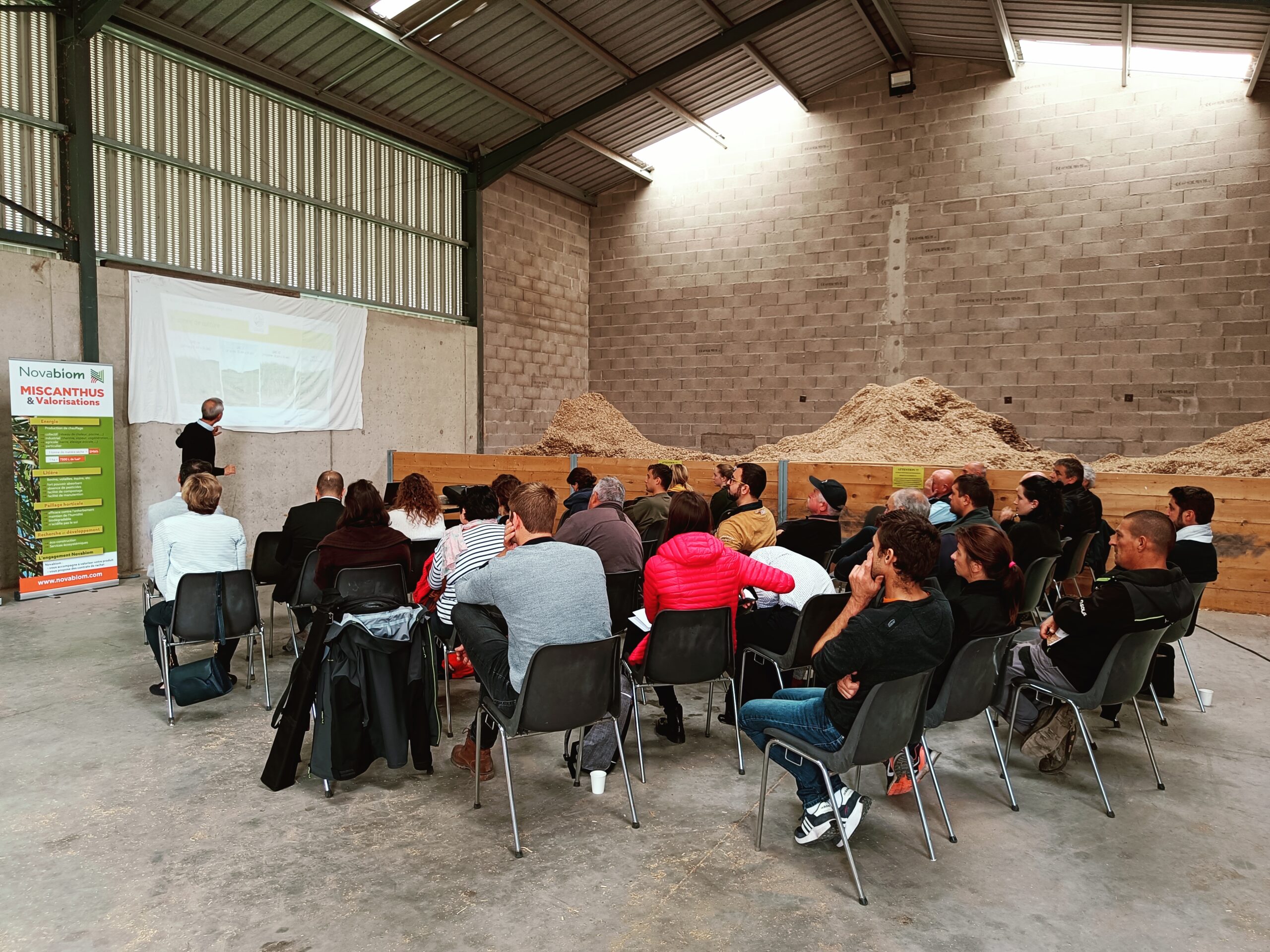
Introduction
Miscanthus is a sector that is becoming structured, innovative and taking its full place in the development of a bioeconomy in the territories and environmental protection.
Addiplast, INRAE and Novabiom are involved in the GRACE R&D project, which brings together a consortium of 22 academic partners, SMEs, large groups and farmers from six European countries, for a budget of €15 million, including €12.3 million from the "Bio-Based Industries Joint Undertaking (BBIJU)".
The project
This project, which is nearing completion, studied the agronomic performance of several varieties of miscanthus and hemp planted on land with little or no potential for food or feed production (marginal land). It also involved the industrial-scale demonstration of 10 value chains based on lignocellulosic biomass.
The demonstration day for the GRACE European research project in Margès on October 13, 2022 is an opportunity to showcase the new products resulting from GRACE research, to take stock of the environmental issues surrounding this crop, and to see first-hand how miscanthus is grown and used on farms for short circuits.
Addiplast, a family-owned SME based in Saint-Pal-de-Mons (Haute-Loire), has been working for several years on adding natural fibers as fillers or reinforcements to polymeric matrices to produce technically high-performance, innovative thermoplastic compounds. The GRACE project has enabled Addiplast to continue developing several Polypropylene / Miscanthus grades to replace mineral fillers or glass fibers, demonstrating very positive effects on environmental impact via life cycle analyses (LCA). As part of the industrialization process, Addiplast also worked with the various Grade project partners to obtain a robust, repeatable and technically and economically more efficient compounding process.
INRAE has been working for several years on the environmental impact of miscanthus cultivation, within the framework of several completed or ongoing projects: GRACE, BFF, CE-CARB, MisTigation.
Study results:
These studies have recently focused on carbon and nitrogen flows in the plant and in the soil. It appears that miscanthus cultivation allows a significant storage of carbon in the soil, between 0.3 and 1.0 tons of carbon per hectare per year for a late harvest, in March-April when the miscanthus canes are dry. As for nitrogen, it has been shown that the plant benefits from an efficient recycling and that in a late harvest situation, there is no need for systematic fertilization.
Novabiom, a national player in the miscanthus sector, has observed that these advantages are generating more and more requests from local authorities who wish to promote the establishment of miscanthus to protect water resources and develop a local bioeconomy, usually a heating plant. Novabiom assists them in setting up these local channels.
Mr. Dumoulin, farmer in Margès in the Drôme, is hosting this demonstration day. He has planted 8 hectares of miscanthus since 2018. The miscanthus chips, produced from the harvests, are used as fuel for two Heizomat boilers of 500 kW each, or as litter for his chicken houses.
Find other types of content on our news page.
